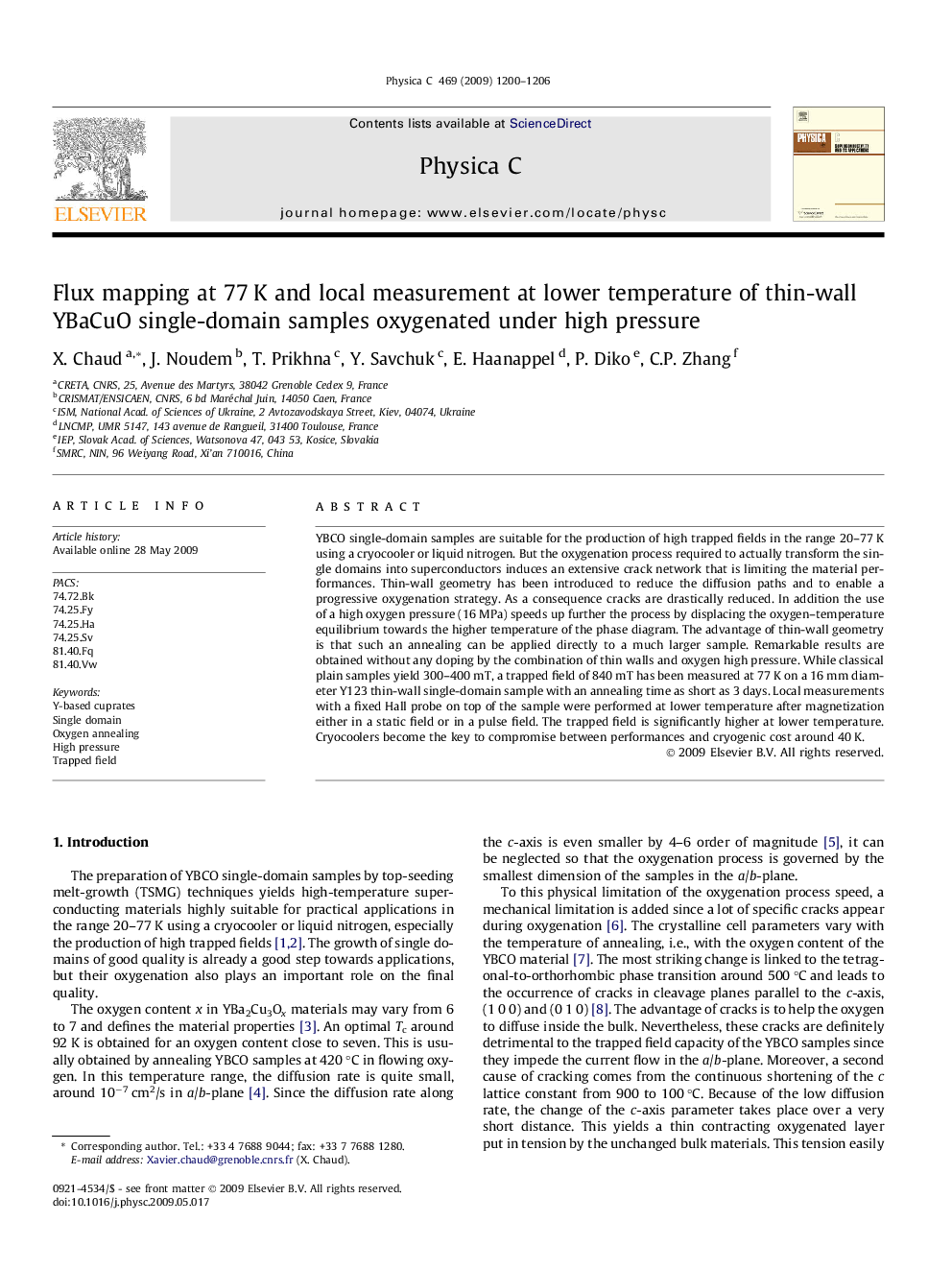| Article ID | Journal | Published Year | Pages | File Type |
|---|---|---|---|---|
| 1819386 | Physica C: Superconductivity and its Applications | 2009 | 7 Pages |
Abstract
YBCO single-domain samples are suitable for the production of high trapped fields in the range 20-77Â K using a cryocooler or liquid nitrogen. But the oxygenation process required to actually transform the single domains into superconductors induces an extensive crack network that is limiting the material performances. Thin-wall geometry has been introduced to reduce the diffusion paths and to enable a progressive oxygenation strategy. As a consequence cracks are drastically reduced. In addition the use of a high oxygen pressure (16Â MPa) speeds up further the process by displacing the oxygen-temperature equilibrium towards the higher temperature of the phase diagram. The advantage of thin-wall geometry is that such an annealing can be applied directly to a much larger sample. Remarkable results are obtained without any doping by the combination of thin walls and oxygen high pressure. While classical plain samples yield 300-400Â mT, a trapped field of 840Â mT has been measured at 77Â K on a 16Â mm diameter Y123 thin-wall single-domain sample with an annealing time as short as 3Â days. Local measurements with a fixed Hall probe on top of the sample were performed at lower temperature after magnetization either in a static field or in a pulse field. The trapped field is significantly higher at lower temperature. Cryocoolers become the key to compromise between performances and cryogenic cost around 40Â K.
Keywords
Related Topics
Physical Sciences and Engineering
Physics and Astronomy
Condensed Matter Physics
Authors
X. Chaud, J. Noudem, T. Prikhna, Y. Savchuk, E. Haanappel, P. Diko, C.P. Zhang,
